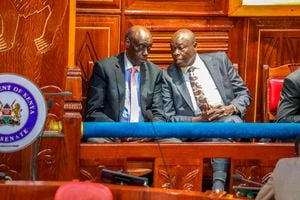Tackle junior school hitch
The transition to the Competency-Based Curriculum (CBC) continues to present tough challenges. One of the most pressing has been the lack of adequate infrastructure, especially additional classrooms, laboratories and other facilities. The second is a staffing shortage.
Accommodating the junior secondary school (JSS) in the primary schools somewhat eased the changeover for the young learners, as they remained in familiar places.
However, with a shortfall of 42,117 teachers, staffing continues to be a major problem that might affect the delivery of the curriculum and achievement of objectives. The JSS, which has three grades, was created as a link between primary and secondary school.
However, the teachers in the JSS have been overworked and forced to teach subjects they had not been trained for. Secondary school teachers specialise in only two subjects at university.
Currently, there are Grades 7 and 8, and the set-up will be complete next year when the pioneer class joins Grade 9. Staffing continues to pose a big headache, with a shortfall of 42,177 teachers.
Teachers Service Commission (TSC) boss Nancy Macharia says the ideal number of teachers needed for the JSS is 99,045. However, there are only 56,928 tutors. And most of them had been hired on one-year contracts as interns. Grade 9 is expected to pose a serious problem next year, straining the existing infrastructure.
The government plans to spend Sh12.8 billion to facilitate the construction of classrooms in conjunction with the constituencies. Some 15,050 JSS classrooms should be ready for use by Grade 9. Now, secondary school principals want the government to allow the Grade 9 students to be transferred to secondary schools instead of being hosted in the JSS due to inadequate infrastructure. The sad reality is that there is little learning going on in the JSS due to the many obstacles. These should be streamlined to enhance learning.





